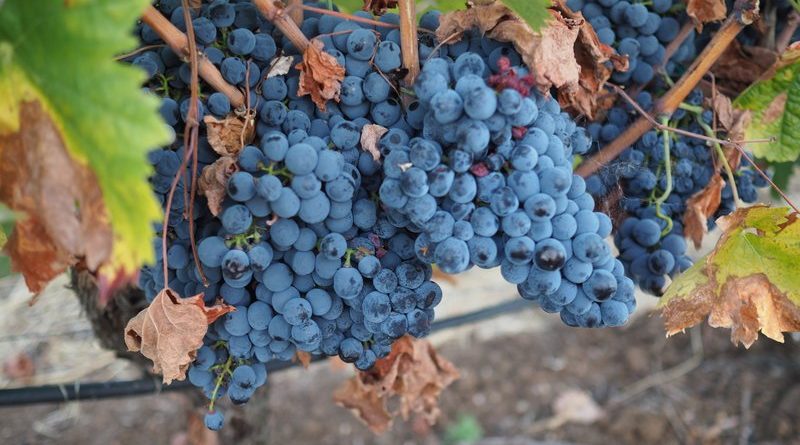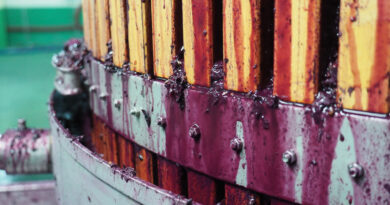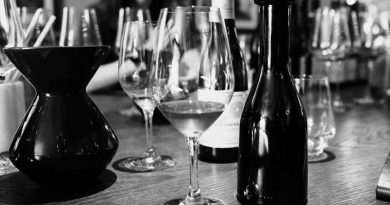What’s all this talk about ‘yields’?
You don’t have to hang around wine circles too long to hear talk of ‘yields’, and generally, the sentiment is that lowest is best. The yield of a vineyard is usually given in tons per hectare (or acre), or hectolitres per hectare. The former is the weight of the grapes harvested; the latter the amount of wine that is produced. [The numerically minded among you can do a rough conversion by taking the juice yield from a ton of grapes into account: typically it will yield 700 litres per ton, although it might be more for machine-picked white grapes, and less for small-berried red grapes that haven’t been destemmed.]
Yields are firmly entrenched in notions of wine quality, and the assumption is that high-yielding vineyards give lower quality than low yielding ones. There is quite a bit of truth in this generalization, but, as is often the case with wine, the devil is in the details.
For a start, vineyards are planted at different densities. This means that a vineyard yielding 10 tons/hectare and planted at 2400 vines/hectare can’t easily be compared with one yielding the same but planted at 10 000 vines/hectare (this is the highest planting density commonly found, with vines 1 m apart and a row width of 1 m). Each vine will be carrying very different quantities of grapes.
Secondly, vineyard sites differ. A fertile vineyard with deep soils and plenty of water will produce lots of leaves. This large canopy will be a factory producing lots of sugar, and the large vine will be capable of ripening more grapes than a small canopy on a vine on a rocky site with low nutrients and poor water availability. Theoretically, at least, a vineyard with fertile soils will have the potential to ripen a larger crop. Here we run into viticultural complexity, though. Big canopies often create shade, and shading buds reduces fruit set in the next year. This is because the fate of the bud that forms either a tendril or a flower cluster is determined by the sun exposure it sees in the previous season. And if the vine is happily motoring ahead with lots of water then it keeps on growing shoots and leaves, rather than focusing its attention of fruit production.
Another issue is that low yields are sometimes the result of disease, poor management, or missing vines (for example, from trunk disease, which is a fungal attack on the wood of the vine). These lower yields have nothing to do with quality.
Some wine scientists have even suggested that this putative relationship between yield and quality is a myth. I wouldn’t go so far. For a start, many appellation systems have yield ceilings that reduce with each quality tier. For example, in Bourgogne, the following maximum yields apply:
- Grand Crus: red 35-37 hl/ha; white 40-64 hl/ha
- Premier crus: red 40-45 hl/ha; white 45-68 hl/ha
- Village appellations: red 40-45 hl/ha; white 45-70 hl/ha
- Regional appellations: red 50-69 hl/ha; white 55-75 hl/ha
There is clearly a belief here that top quality isn’t compatible with high yields, and that reducing yields can lead to a quality gain. This doesn’t imply that there’s a fixed relationship between yield and quality. But even outside appellations with fixed rules, winegrowers realise that they have to limit their crop if they are to achieve high quality. To suggest that this link is mythical is to imply that these growers are deliberately limiting their income through their failure to crop at higher levels. Would that it were so simple…
Some vineyards are naturally low yielding, especially those with old vines. But many have the potential to produce high yields, and viticultural interventions such as dropping crop at veraison (when the grapes change colour and begin to soften), or pruning shorter to reduce the number of fruit-bearing shoots are carried out. Winegrowers are effectively losing income here if they remove more grapes than are necessary. So if they really could crop higher and still hit their quality targets, they would. This sort of collective stupidity, if it were that, wouldn’t last long in the face of economics.
Skilful viticulture can certainly help produce good yields of good quality grapes. A lot depends on the site, the variety, the wine style, the vineyard age and planting density, and the growing season. After all, you don’t want to be sitting on a large crop, maturing slowly, when Autumn rains hit. Skilled viticulture is about achieving an appropriate yield. For some wine styles, reasonably high yields might be totally compatible with high quality. For example, in Champagne, some celebrated wines are made from generously cropped vines. And in New Zealand’s Marlborough region, the most expensive vineyards are those yielding both high quality and generous volumes, such as those in the lower Wairau, which are famed for their extremely aromatic expressions of Sauvignon Blanc from high yields of around 20 tons a hectare.
And reducing yields below a certain point can be counterproductive: ripening can occur too fast, resulting in overly rich alcoholic wines. There seems to be a point below which there is nothing more to be gained by reducing yield.
Where does this leave us? High yields can lead to dilute wines lacking intensity or varietal character. Reducing yields can lead to more concentrated wines with more personality. For each vineyard and variety, and for each wine style, there’s an optimum yield that balances quality and quantity, and skilled viticulture seeks to find this level, which may also depend on the growing season.




